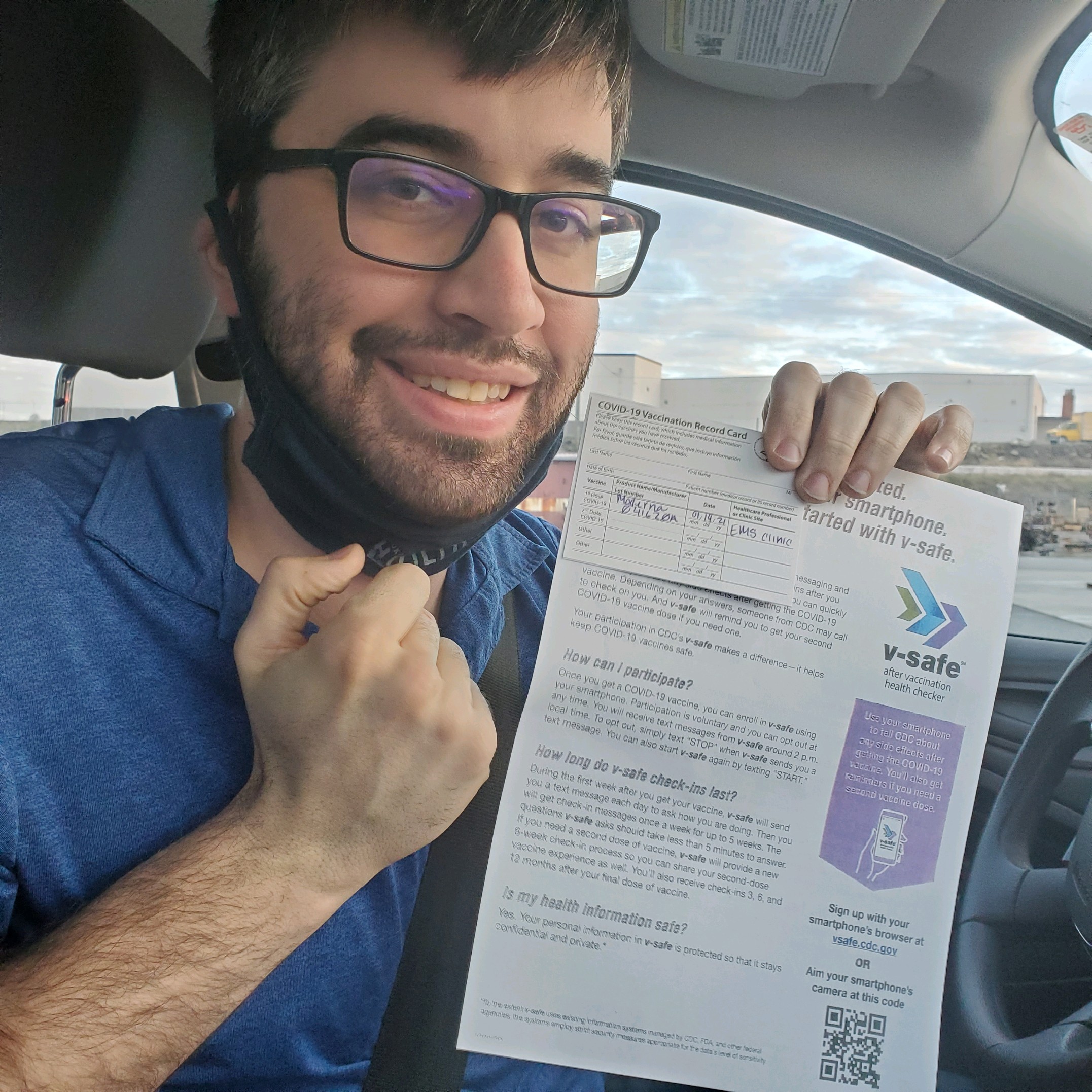As we approach the one-year mark of fighting the coronavirus pandemic, several vaccines have begun mass rollout across the country. Thanks to the quick and collaborative work of scientists across the world, the vaccine – which was granted emergency approval by the World Health Organization and the U.S. Food & Drug Administration – is becoming more widely available as states organize their efforts and prioritize the most vulnerable among our populations.
PROTEC17 members who work on the front lines in Public Health were some of the first to receive the vaccine in January. These members know that the vaccine can save lives and help end the pandemic once a critical mass of the population is protected. That’s because many of our Public Health members are health educators, medical assistants, and other professionals who promote and administer a variety of vaccinations – even in non-pandemic times.
Vaccines work by triggering our bodies’ cells to make proteins that build immunity to a virus. As of this writing, two vaccines have been approved for use in the United States to prevent the spread of COVID-19. One is made by the pharmaceutical company Moderna and the other by Pfizer. Both underwent a rigorous testing, review, and approval process to establish their safety and effectiveness.
At Spokane Regional Health District, PROTEC17 member Nick CastroLang expressed his grattitude for the vaccine when he got his first dose in January.
“I am grateful we have vaccines and I’m excited for people to get a vaccine,” he said. “It’s the only way to get through this pandemic. We need to trust science and the experts in Public Health who know how viruses work and how best to fight this.”
The vaccine requires two shots spaced about four weeks apart. Some mild to moderate side effects have been reported and are normal signs that our bodies are building protection. Common side effects include pain or swelling at the injection site, fever, chills, tiredness and headaches, but they should dissipate within a few days. The vaccine is free of charge.
“After the vaccine, my arm was a little sore, but the process was super efficient and great,” said CastroLang. “The Fire Training Facility [in Spokane] was a fantastic place and the EMS people who provided the vaccine were great.”
While CastroLang is not working directly on SRHD’s vaccination efforts at the mass clinic at Spokane Arena, he works on the frontlines of the opioid epidemic – another health crisis in our communities. He gets his second dose of the coronavirus vaccine in February.
Both the Washington Department of Health and the Oregon Health Authority have created eligibility phases to organize the demand for the vaccine, and to prioritize frontline healthcare workers, the elderly, people with multiple medical conditions, and other vulnerable groups to get their shots first. The plan is to distribute vaccinations through traditional delivery systems, like hospitals and pharmacies, but also to ramp up distribution through other means, like mobile vaccination teams, community-based pop-up clinics, and mass vaccination sites. Visit the resources and links below to find out which phase you will be eligible to get your vaccine and where the nearest vaccination site is to you.
Knowing the broad, long-term impact that the pandemic is having on workers and our economy, employers and unions are working together, too, to encourage workers to get the vaccine and to organize communication and outreach efforts.
At the City of Seattle, a pop-up clinic was organized for employees over 65 years of age and working onsite at least three days per week. Because of its success, more pop-ups will be scheduled in the coming weeks. We will be communicating information to Seattle members as we learn more.
In Portland, PROTEC17 member and GIS Specialist Paul Cone has been mapping vaccination sites in the city for a public-facing resource.
Many other PROTEC17 members across the Northwest are helping in different ways to support the rollout of the vaccine – even if that just means being patient and waiting for their phase to be given the green light to get vaccinated.
“I want people to stay patient and make sure you only receive the vaccine when you are eligible, and remember that the public health workers and healthcare workers are doing their best,” said CastroLang.
The coronavirus pandemic has also underscored the vital importance of our Public Health system, and how quickly it can become overwhelmed. While our members and their local systems have been doing an incredible job with the resources they have, the last year has demonstrated how chronically underfunded the Public Health system is.
Funding via the state legislature, as well as federal and local dollars, are so important to tackling all of the issues that need to be addressed in our communities says CastroLang.
“We need to be prepared to attack public health crises outside of COVID-19,” he said. “We have racism, gun violence, the opioid crisis, and many more – and we must be proactive. Public Health is viewing the whole of society and attacking all of our health issues head on.”


